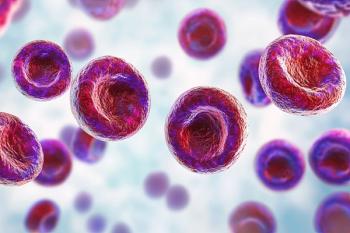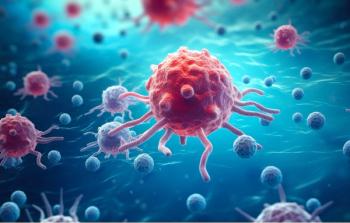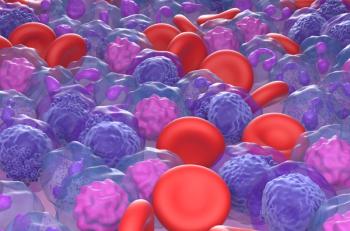
Chronic Urticaria Linked to Specific Gut Bacteria and Metabolic Pathways
Key Takeaways
- CSU is associated with gut microbiota, with metabolic pathways potentially mediating this link, suggesting new research directions.
- Accurate CSU diagnosis is difficult due to symptom overlap with other pruritic conditions, complicating epidemiological understanding.
A causal link between chronic spontaneous urticaria and gut microbiota, with metabolic pathways potentially acting as mediators, offer new avenues for research and clinical understanding.
Chronic spontaneous urticaria (CSU) has a causal association to gut microbiota, with the metabolic pathway being a potential mediator, providing new insights for further mechanistic and clinical studies, according to a study published in the
Diagnosing urticaria is often delayed because it is a mast cell-driven
Researchers conducted a genome-wide association study and they performed bidirectional Mendelian randomization to detect genetic causality between gut microbiota, gut bacterial pathways, and CSU. Researchers identified 2238 single nucleotide polymorphisms (SNPs) as instrumental variables for 211 taxa in the MiBioGen consortium, and they included 1727 SNPs for 205 metabolism pathways in the Dutch Microbiome Project.
Inverse variable weighting (IVW) showed a positive association between CSU and the family Peptococcaceae (OR, 1.94; 95% CI, 1.03-3.63; P = .0328) and the genus Peptococcus (OR, 1.61; 95% CI, 1.04-2.49; P = .0328). The 4 bacterial genera that were found as risk factors for CSU were Collinsella (OR, 2.77; 95% CI, 1.18-6.50; P =.0189), Lachnospiraceae UCG004 (OR, 2.21; 95% CI, 1.09-4.47; P =.0279), Ruminococcaceae UCG004 (OR, 1.93; 95% CI, 1.08-3.45; P =.0255), and Sellimonas (OR,1.54; 95% CI, 1.08-2.20; P =.0184).
Researchers also found gut microbiota to be a protective factor for CSU. The IVW analysis showed a negative link between CSU and the genera Family XIII UCG001 (OR, 0.33; 95% CI, 0.15-0.71; P =.0044), Lachnospiraceae UCG010 (OR, 0.42; 95% CI, 0.20-0.87; P =.0197), and Methanobrevibacter (OR, 0.56; 95% CI, 0.33-0.95; P = .0320). CSU suggested an association with the family Peptostreptococcaceae (OR, 1.05; 95% CI, 1.00-1.09; P = .0426), genera Eubacterium xylanophilum group (OR, 1.05; 95% CI, 1.00-1.10; P = .0408), and Intestinibacter (OR, 1.06; 95% CI, 1.01-1.11; P = .0215).
Additionally, CSU had a negative effect on the genera Eubacterium brachy group (OR, 0.94; 95% CI, 0.90-0.98; P = .0028), Candidatus Soleaferrea (OR, 0.93; 95% CI, 0.87-1.00; P = .0474), Christensenellaceae R7 group (OR, 0.95; 95% CI, 0.91-0.99; P = .0116), and Lachnospiraceae FCS020 group (OR, 0.95; 95% CI, 0.90-0.99; P = .0242). Researchers based study results on nominal significance (P < .05) but none of the Bonferroni-corrected values were < .05.
A total of 8 gut bacterial metabolism pathways played a role in the metabolism of nucleic acids and amino acids, suggesting a significant causal association with CSU. Risk of CSU increased for some pathways while others created a protective effect against CSU. Overall, CSU affected 3 pathways: ASPASN-PWY (OR, 0.93; 95% CI, 0.88-0.99; P =.0311), GALACT-GLUCUROCAT-PWY (OR, 0.93; 95% CI, 0.87-0.99; P =.0208), and GALACTARDEG-PWY (OR, 1.13; 95% CI, 1.01-1.27; P =.0368).
The study emphasized that the genera Peptococcus and Peptostreptococcus dominated the affected skin area of patients with acute urticaria. The scarcity of studies on CSU limited the research, and researchers consider data on gut microbiota still in its infancy in terms of sample size. Future studies could focus more on a specialized level surrounding species or strain. The genomic data extracted in this investigation came from European cohorts and researchers still need to verify whether they represent other populations. Clinical implications necessitate more direct and further experiments for verification.
“This study provides new targeted gut microbiota and metabolic pathways for further mechanistic and clinical studies on CSU,” study authors concluded.
References
1. Yao Y, Chen J, Cao H, et al. Causal effect between gut microbiota, gut bacterial pathway, and chronic spontaneous urticaria: a large-scale bidirectional Mendelian randomization analysis. J Investig Allergol Clin Immunol. 2025;35(6). doi:10.18176/jiaci.1054
2. Santoro C. Urticaria diagnosis challenged by overlapping pruritic skin conditions. AJMC®. April 23, 2025. Accessed May 21, 2025.
3. Luo Z, Jin Z, Tao X, et al. Combined microbiome and metabolome analysis of gut microbiota and metabolite interactions in chronic spontaneous urticaria. Front Cell Infect Microbiol. 2023;12:1094737. doi:10.3389/fcimb.2022.1094737
Newsletter
Stay ahead of policy, cost, and value—subscribe to AJMC for expert insights at the intersection of clinical care and health economics.













































